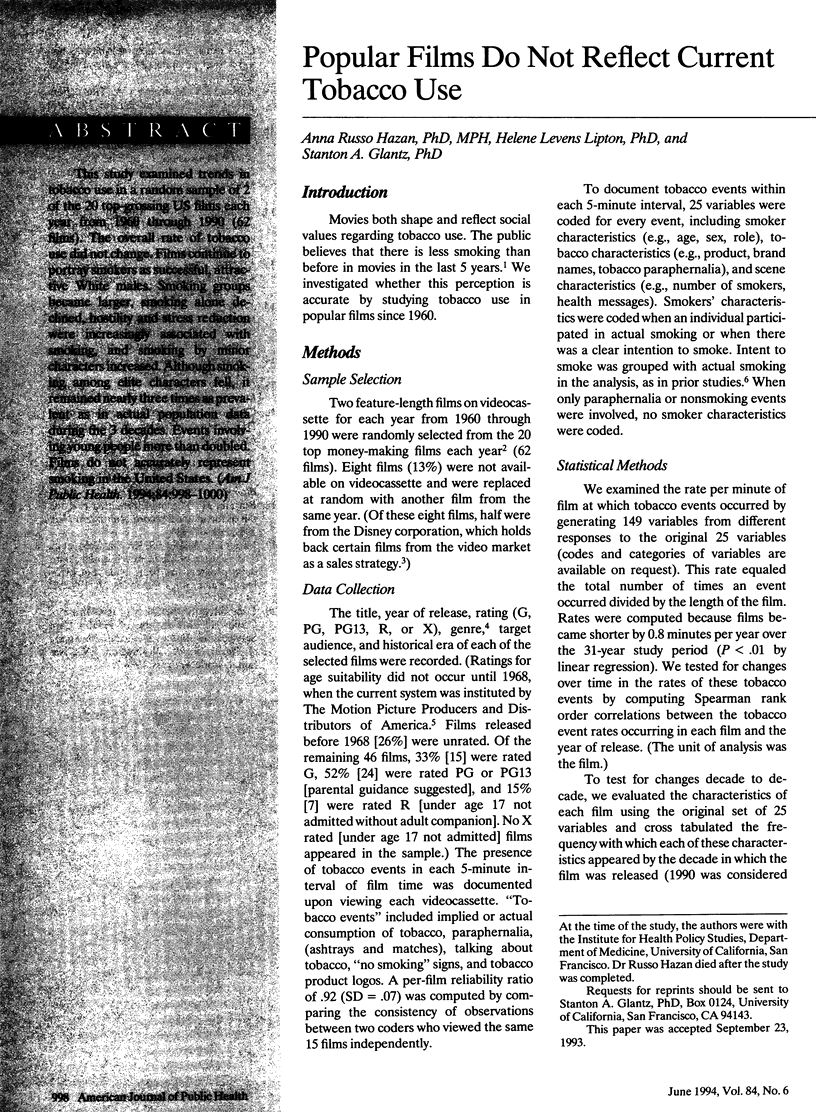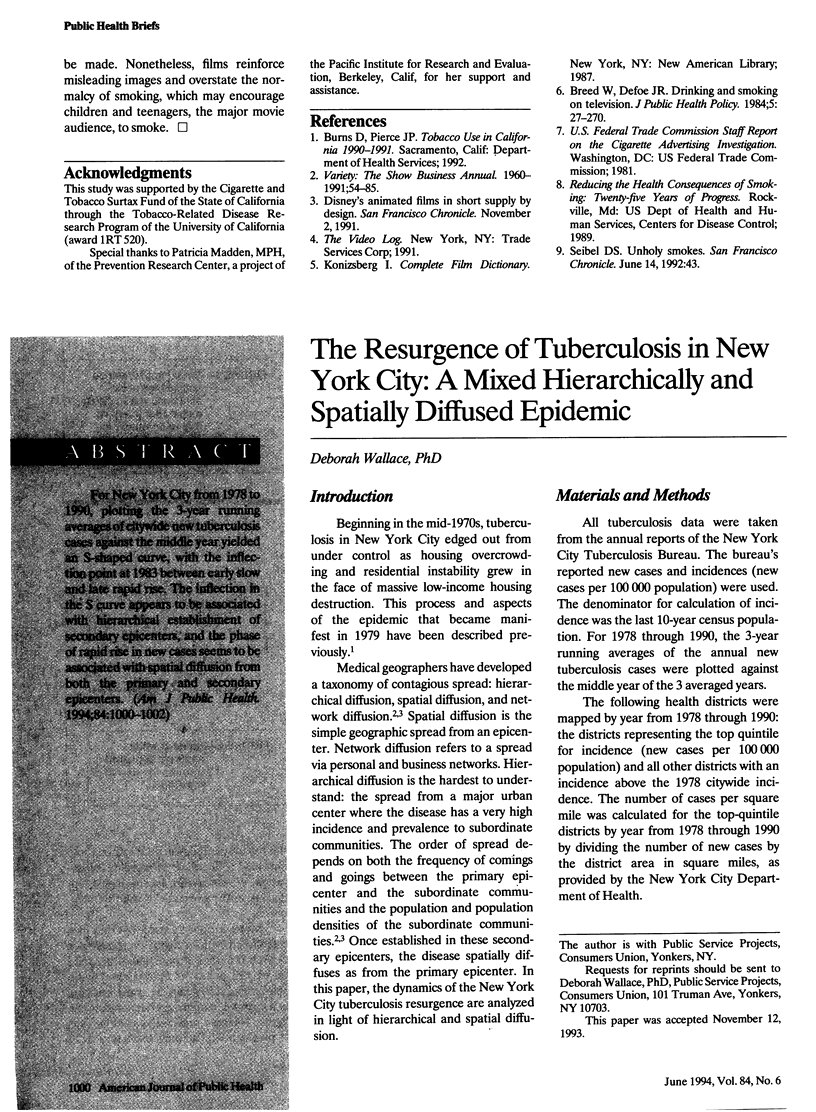Abstract
This study examined trends in tobacco use in a random sample of 2 of the 20 top-grossing US films each year from 1960 through 1990 (62 films). The overall rate of tobacco use did not change. Films continue to portray smokers as successful, attractive White males. Smoking groups became larger, smoking alone declined, hostility and stress reduction were increasingly associated with smoking, and smoking by minor characters increased. Although smoking among elite characters fell, it remained nearly three times as prevalent as in actual population data during the 3 decades. Events involving young people more than doubled. Films do not accurately represent smoking in the United States.
Full text
PDF


Selected References
These references are in PubMed. This may not be the complete list of references from this article.
- Breed W., De Foe J. R. Drinking and smoking on television, 1950-1982. J Public Health Policy. 1984 Jun;5(2):257–270. [PubMed] [Google Scholar]


